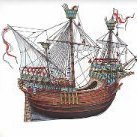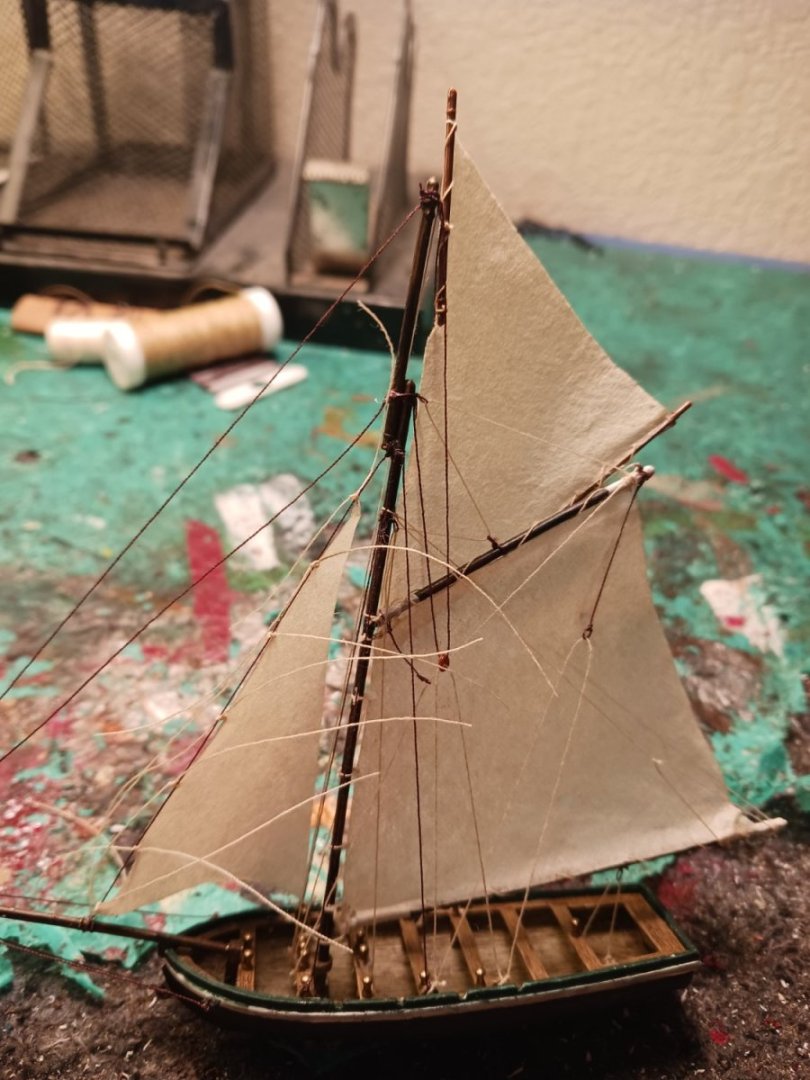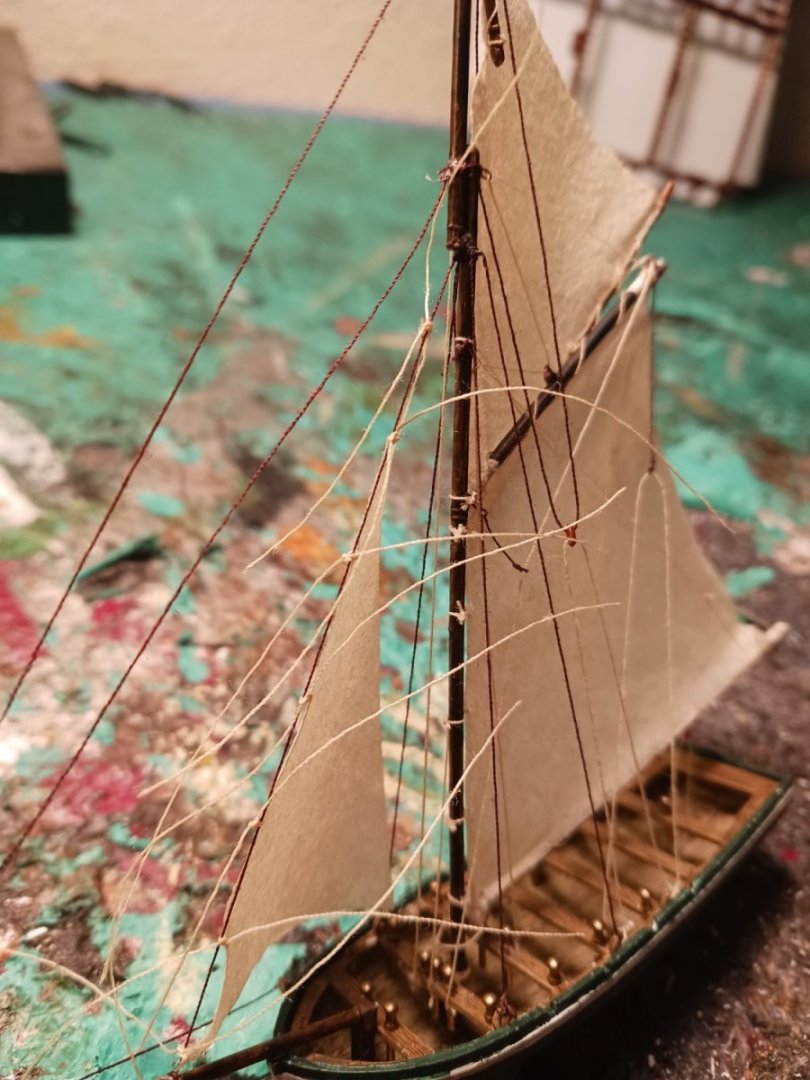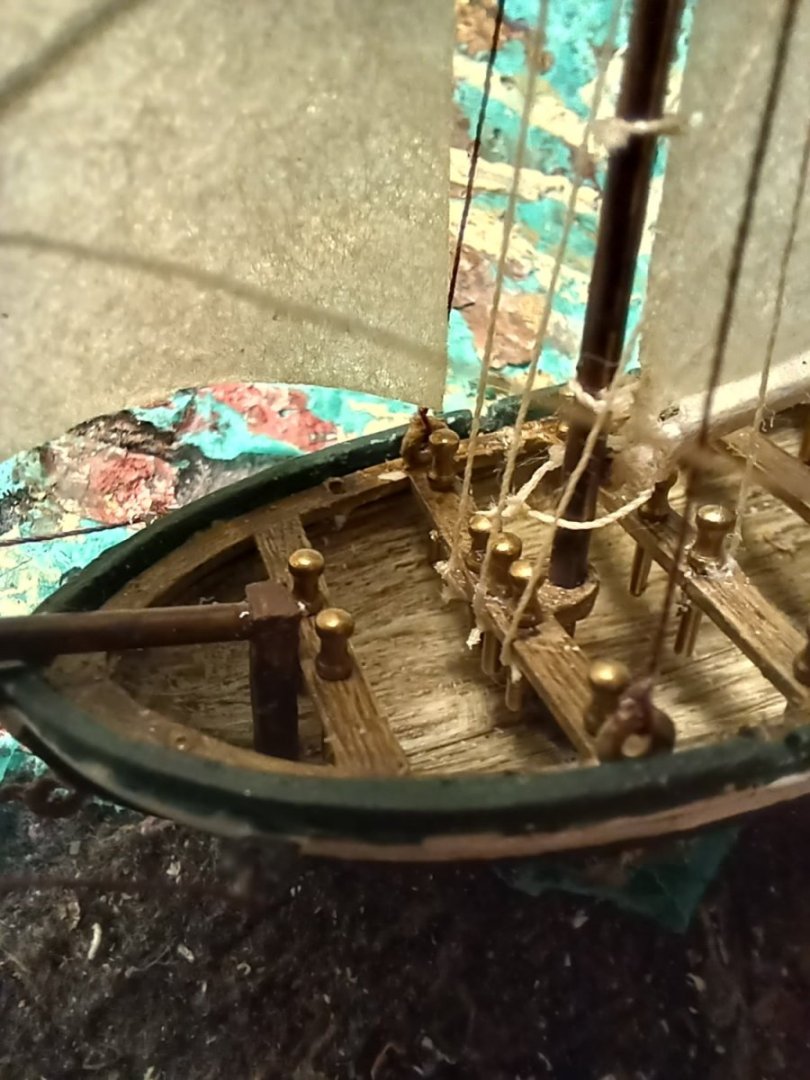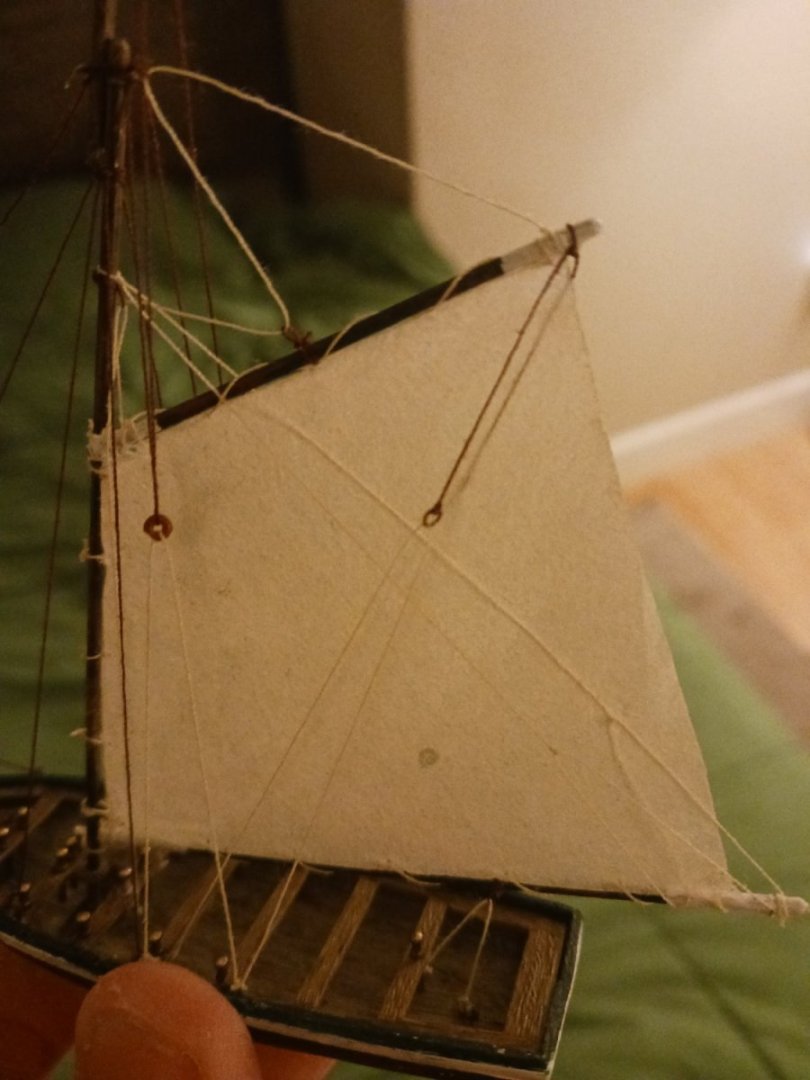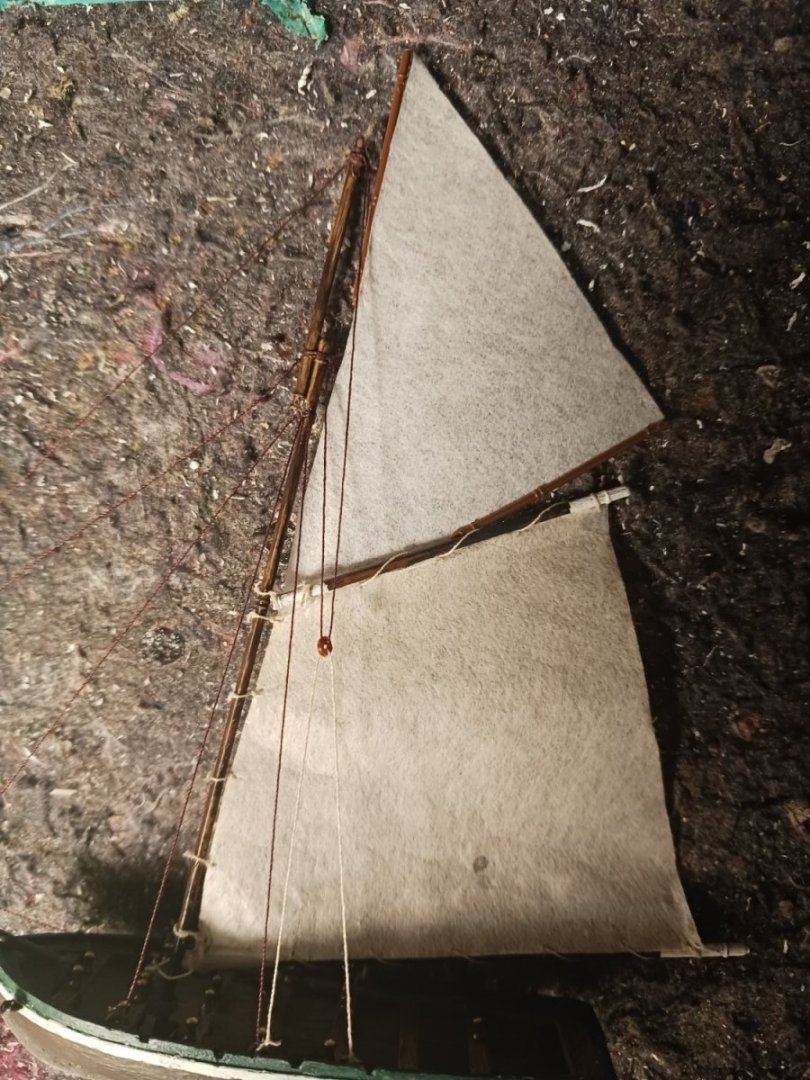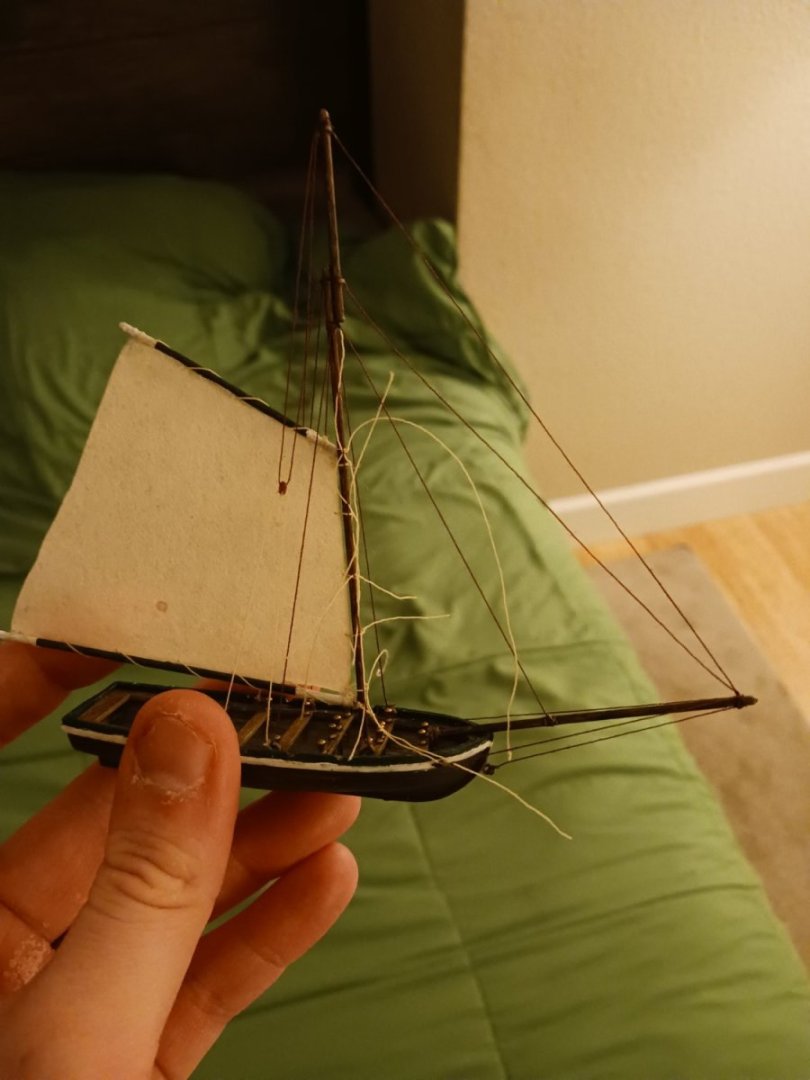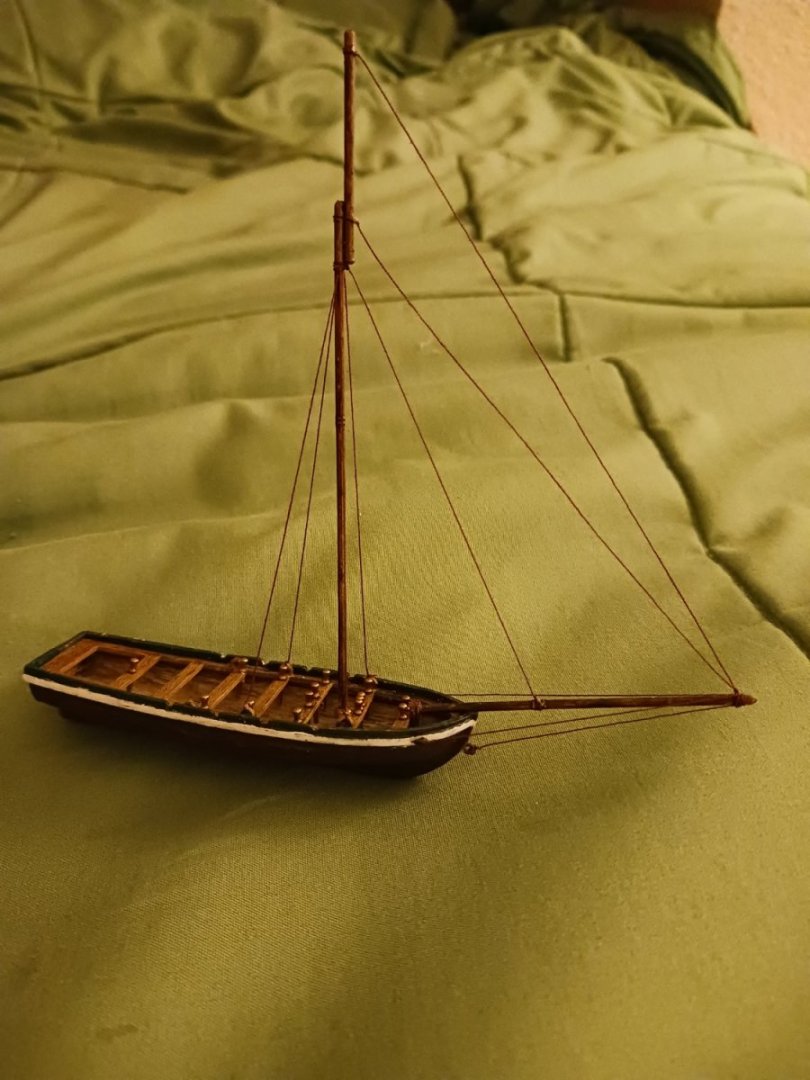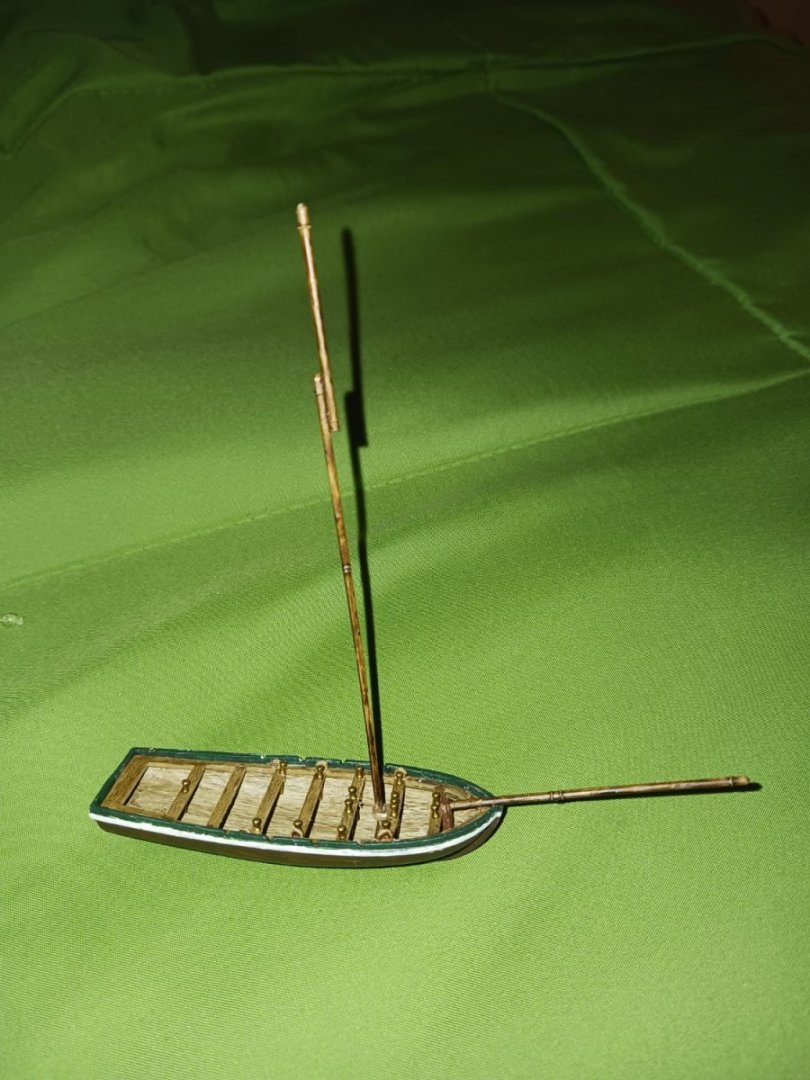-
Posts
1,407 -
Joined
-
Last visited
Content Type
Profiles
Forums
Gallery
Events
Everything posted by Ferrus Manus
-
It definitely looks like the standing rigging is done. Good job! Now you have an insane amount of blocks to strop.
- 1,508 replies
-
- Le Soleil Royal
- Heller
-
(and 1 more)
Tagged with:
-
This is the proposed size and shape of the gaff topsail, laid out on the table. Jackyard topsails were the largest variant of gaff topsail, and often rivaled the size of the main gaff itself. Racing yacht riggers used them to legally increase the sail area of their ships via a loophole in racing rules, hence their prevalence on the racing yachts of the early 20th century.
-
Are we able to see it on the ship?
- 134 replies
-
- sea of galilee boat
- SE Miller
-
(and 1 more)
Tagged with:
-
Today, i got the first sail bent. I cut it out by eye, trimmed it down, and then made a stupid mistake. I lashed the sail to the yard and boom, which i painted yesterday, before i remembered to stain the sail. I went for it anyway because why not. I poured myself a cup of coffee, but the coffee wasn't for me. I dipped the sail, spars and all, into the coffee, not knowing if the hot liquid would strip the paint, which would mean a junk sail and a second paint job. Luckily, the paint didn't strip. For "jaws" for the gaff and boom, i simply tied a rope around the end of both and tied the ends around the mast. I made "mast hoops" by running a line through the head of the sail and tying it around the mast. Here is the finished result, minus gluing and trimming the knots.
-
I meant that thing that looks like a mast with a sheave in it that's sitting in the far background, up against the back wall of your workspace and partially obscured by the sheet you have protecting your workspace.
- 134 replies
-
- sea of galilee boat
- SE Miller
-
(and 1 more)
Tagged with:
-
Will you end up making a calcet (sheave piece on the mast) for the yard's lift? Edit: I JUST realized you're making... another boat? You had two kits?
- 134 replies
-
- sea of galilee boat
- SE Miller
-
(and 1 more)
Tagged with:
-
The mast definitely looks better. I had to compare it to the first photo because my eyes initially failed me. You could probably, if you have a drill, make a custom lathe out of that. Your life would be made way easier.
- 134 replies
-
- sea of galilee boat
- SE Miller
-
(and 1 more)
Tagged with:
-
Remember the fact that typically, boats and ships of this time had pretty spindly masts, that were held in place by thick backstays. It looks like you've turned it to a smaller diameter on a lathe. It looks better than it was, perhaps it's just the angle.
- 134 replies
-
- sea of galilee boat
- SE Miller
-
(and 1 more)
Tagged with:
-
Hey, what's the mast sitting against your wall? Is that an alternative mast for the boat?
- 134 replies
-
- sea of galilee boat
- SE Miller
-
(and 1 more)
Tagged with:
-
I installed the mast step and bowsprit step, and glued in both structures. This is intended to be one of those boats that looks like it's just spars, with the actual boat being kind of an afterthought. Sort of like this smack, but slightly more extreme. It will have a sloop rig with a jackyard topsail.
-
Steven, if i had to give my input, i would tell you to probably just do what Woodrat did with the rudders on his Nave Rotunda. At least the side structures, and maybe you could plank outside them as shown in the images.
- 508 replies
About us
Modelshipworld - Advancing Ship Modeling through Research
SSL Secured
Your security is important for us so this Website is SSL-Secured
NRG Mailing Address
Nautical Research Guild
237 South Lincoln Street
Westmont IL, 60559-1917
Model Ship World ® and the MSW logo are Registered Trademarks, and belong to the Nautical Research Guild (United States Patent and Trademark Office: No. 6,929,264 & No. 6,929,274, registered Dec. 20, 2022)
Helpful Links
About the NRG
If you enjoy building ship models that are historically accurate as well as beautiful, then The Nautical Research Guild (NRG) is just right for you.
The Guild is a non-profit educational organization whose mission is to “Advance Ship Modeling Through Research”. We provide support to our members in their efforts to raise the quality of their model ships.
The Nautical Research Guild has published our world-renowned quarterly magazine, The Nautical Research Journal, since 1955. The pages of the Journal are full of articles by accomplished ship modelers who show you how they create those exquisite details on their models, and by maritime historians who show you the correct details to build. The Journal is available in both print and digital editions. Go to the NRG web site (www.thenrg.org) to download a complimentary digital copy of the Journal. The NRG also publishes plan sets, books and compilations of back issues of the Journal and the former Ships in Scale and Model Ship Builder magazines.


